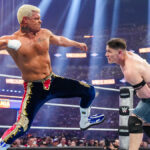In professional wrestling, newcomers might initially think that managers and commissioners fulfill similar roles, but they actually serve very different purposes and often oppose one another. Managers are typically champions of the wrestlers they represent, appearing alongside them in the ring and speaking for them. They have been a key part of wrestling since its early days, helping to build connections between fans and performers by portraying characters as heroes (babyfaces) or villains (heels). Though less common today, managers still play a critical role in guiding many wrestlers’ careers.
Conversely, commissioners are more rare and act as fictional executives overseeing the wrestling brand on TV. Not every promotion includes a commissioner, and those that do often use this role to advance storylines by introducing new rules or challenges for wrestlers. Commissioners can be heroes, villains, or neutral figures and frequently have backgrounds as former wrestlers themselves. In recent years, the commissioner role has been largely replaced by general managers, who serve as impartial authorities on shows like WWE Raw and SmackDown, with Adam Pearce and Nick Aldis filling these spots.
Throughout wrestling history, many managers have left a lasting impact, with the late Bobby “The Brain” Heenan widely regarded as one of the best, known for his entertaining alliances with stars like Ric Flair and Andre the Giant. In the modern era, Paul Heyman stands out as a top manager, known for guiding big names such as Brock Lesnar, Roman Reigns, and Seth Rollins, and also serving as a WWE general manager. Wrestling often blends reality with scripted drama, illustrated by figures like Vince McMahon, who has played an on-screen authority figure while managing WWE in real life. Similarly, AEW stars like Kenny Omega and the Young Bucks juggle roles as both executives and active wrestlers, blurring the lines between their real and fictional responsibilities.
Fan Take: Understanding the distinction between managers and commissioners enriches the WWE viewing experience by highlighting the different ways characters contribute to storylines and wrestler development. This dynamic is crucial for evolving the sport’s drama and backstage politics, ultimately keeping fans invested in the ever-changing world of professional wrestling.













